New Year celebrations that mark the turning of the year isn’t an ordinary day. This yearend event is often bursting with jubilation, reflection, and hope. New Year’s traditions range from the confetti-laced streets of Rio de Janeiro to the silent reverence of Japanese temple bells. Each country and culture has its own unique New Year’s tradition and celebration.
Imagine starting the year in white, dancing on the beach or walking in a snow-dusted Japanese village, listening to the serene echoes of 108 temple bells cleansing you for the year ahead.

In this article, we look at unique New Year’s celebrations worldwide. Here lies a kaleidoscope of sights, sounds, and emotions that can broaden your perspective and enrich your soul. Once experienced, you will return home with a deeper understanding of our fundamental human desire for connection, joy, and a brighter tomorrow.
So consider venturing beyond your own doorstep. Here are some exciting and unusual New Year celebrations worldwide that are waiting to be embraced and cherished.
Great New Year Celebrations WorldWide
Spain New Year’s Tradition: Eating Grapes
The tradition of consuming grapes to ring in the new year finds its origins in Spain, where it’s believed to bring forth prosperity and good luck for the upcoming year. Spaniards have long upheld the practice of eating 12 grapes precisely at midnight on December 31st. The timing is crucial; one grape for each stroke of the clock as it chimes in the new year.
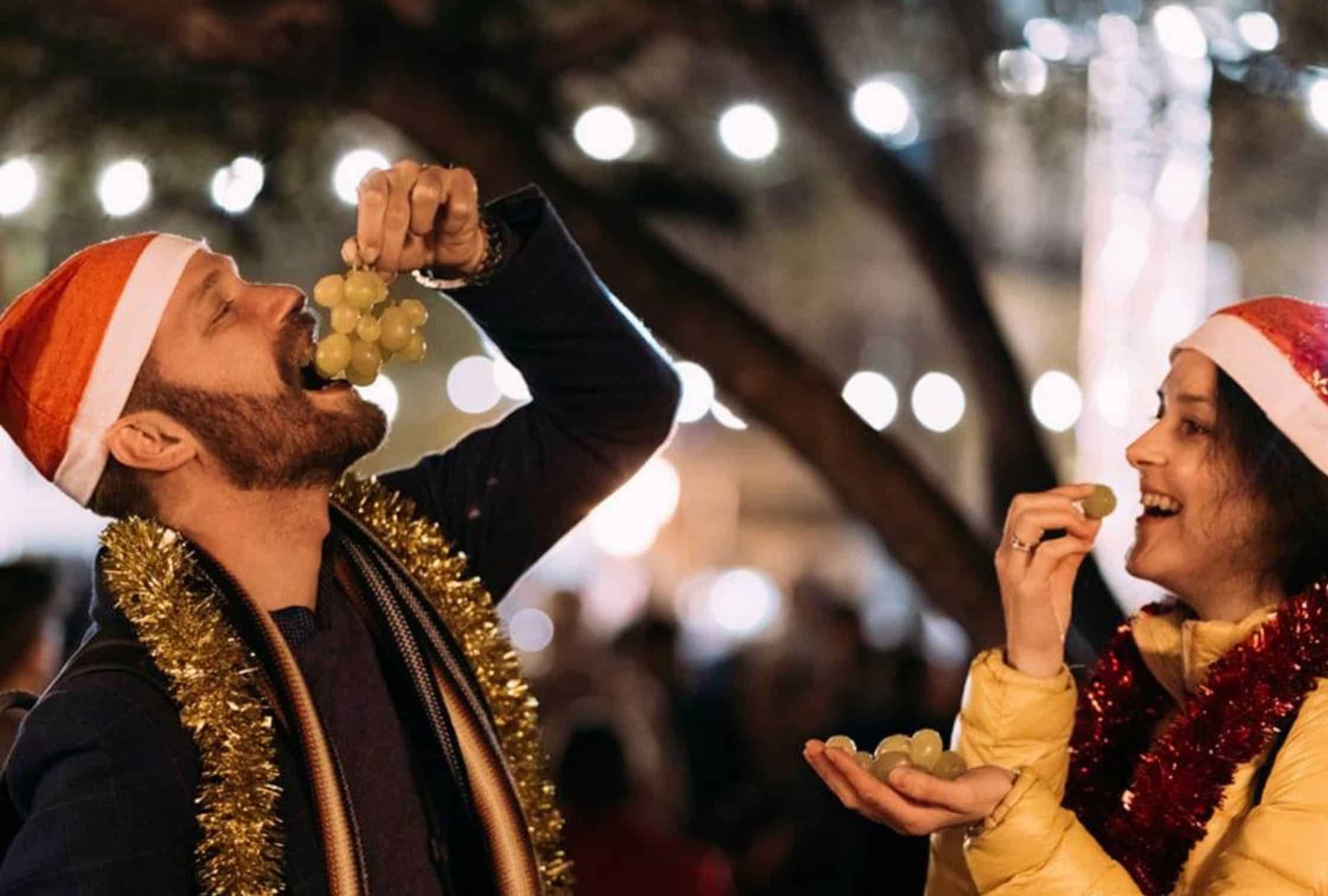
Each grape represents a wish for the upcoming months, aligning with the twelve chimes of the clock, symbolising hopes and aspirations for the months ahead. This delightful tradition combines the joy of celebration with a belief in the power of wishes.



The charm of this tradition has transcended borders, finding a place in numerous countries across South America and Latin America. The advent of social media platforms like TikTok has propelled this tradition to viral status. Influencers and users alike partake in the challenge of consuming the 12 grapes in sync with the clock’s chimes, sharing their attempts and experiences with a global audience.
Adding a unique twist to this tradition, in Peru, there’s a belief that indulging in the grape-eating ritual while seated beneath a table can bring luck to one’s love life. This variation adds a touch of whimsy to the tradition, encouraging those seeking romance in the new year to embrace this charming superstition.
Colombia New Year’s Tradition: Cleaning and lentils



In Colombia, the act of cleaning holds significant cultural value, especially during the New Year festivities. It’s a ritual steeped in tradition and symbolism, where the expulsion of negative energies and unpleasant memories from homes takes precedence before the stroke of midnight. This symbolic act signifies the creation of a pristine space for love and positivity to flourish in the upcoming year.
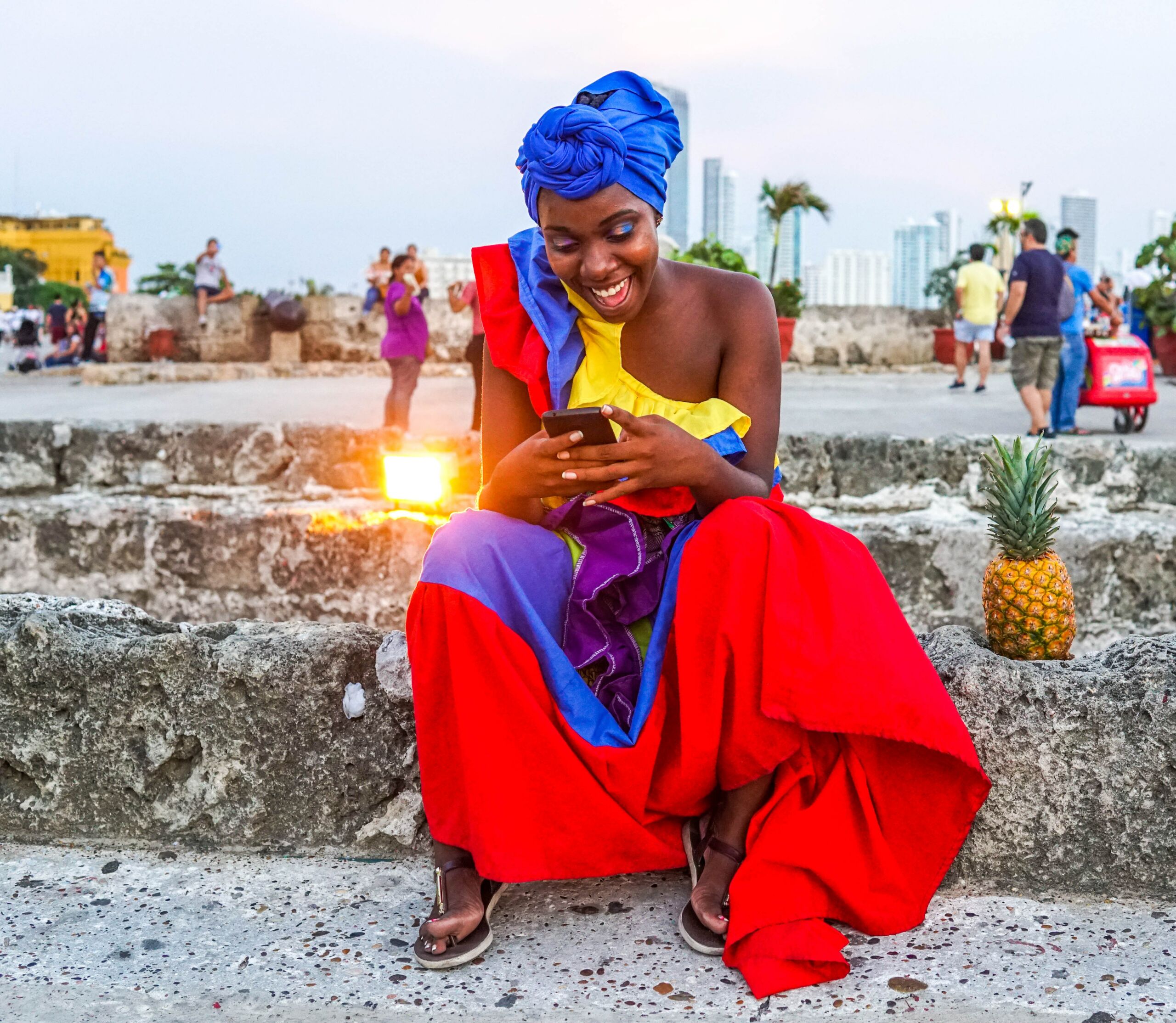


In the Valle del Cauca region and the vibrant city of Cali, the purification ritual extends beyond mere housecleaning. Here, locals partake in a unique tradition by bathing in the rejuvenating waters of the Pance River during the early hours of New Year’s Eve. This cleansing ritual isn’t just about clearing negative energy; it’s also grounded in the belief that a refreshing dip in the river revitalizes the body and mind. Scientifically, a cold bath has been associated with improved circulation, heightened alertness, strengthened immunity, and rejuvenated skin, adding a layer of health benefits to this traditional practice.
Colombia boasts several other intriguing New Year customs, each with its own symbolic significance. One such tradition involves stuffing pockets with dry lentils on New Year’s Eve, symbolizing the invocation of a prosperous and successful year ahead. Then, as the clock strikes midnight on December 31st, many Colombians embark on a quirky yet meaningful ritual, grabbing their trusty empty suitcases and briskly walking around their block. Some even opt for a quick run, believing that this symbolic journey will materialize into a year brimming with exciting adventures and plentiful travels.
Denmark’s New Year’s Tradition: Smashing Plates
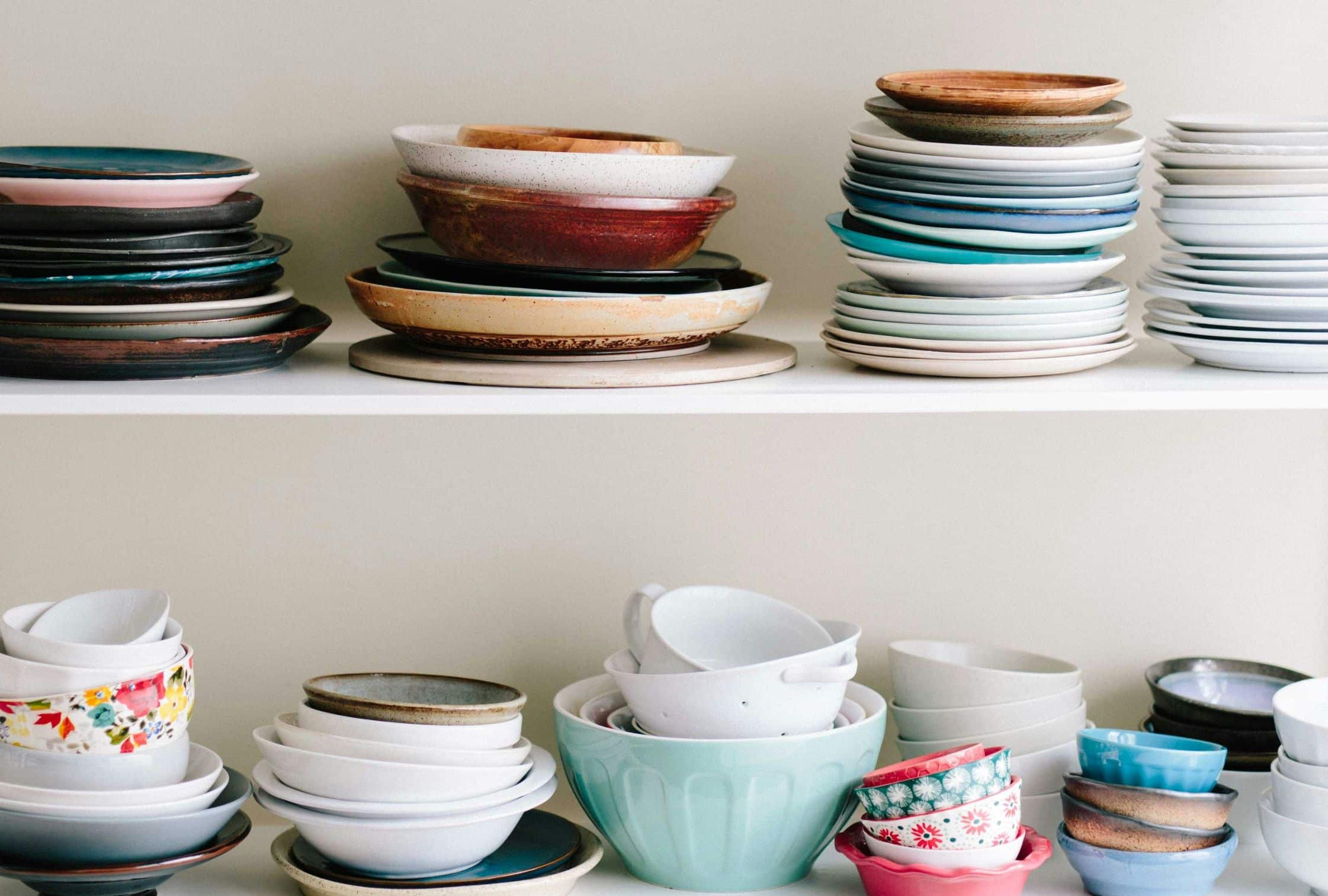


Danes have some fascinating customs to mark the transition into the New Year, and one of the most intriguing involves an act that might initially seem odd—standing on chairs just before midnight on New Year’s Eve.
This tradition, deeply rooted in Danish folklore, signifies the leap into the new year. As the clock strikes 12, Danes jump on the chairs, an act that symbolises a joyful and energetic entrance into the upcoming year. It’s believed that failing to partake in this lively ritual might bring about a year plagued with bad luck.
Another unique Danish tradition that captivates both locals and visitors is the custom of throwing and smashing old plates and glasses against the doors of friends and family on New Year’s Eve, known as “smashing plates” or “plate smashing.” While the exact origins of this practice remain somewhat shrouded in mystery, it’s steeped in the essence of gratitude and goodwill.



The act of hurling plates against someone’s door isn’t an act of malice but a symbolic gesture of appreciation and well wishes for the coming year—the more plates piled up at one’s doorstep, the greater the display of friendship and popularity.
To prepare for this tradition, Danes collect unused plates throughout the year, often acquiring them from thrift stores or garage sales. Some even personalize the plates with messages or artwork, adding a heartfelt touch to the impending smashing ceremony.
On the eve of the New Year, these amassed plates find their way to the homes of cherished friends and family. These plates are joyfully shattered against the front doors, echoing with the shared sentiments of gratitude, goodwill, and hopes for a prosperous and fortunate year ahead.
Panama’s New Year’s Tradition: Burning Effigies



In Panama, the arrival of the new year brings forth unique and symbolic traditions that involve effigies, known as Judas dolls or Muñecos, intricately woven from straw and prominently displayed in front of homes or along roadsides.
These effigies hold a special significance as they represent individuals or entities that evoke negative sentiments within the community. The number of effigies varies, with some households displaying one or two, while others showcase several.
What makes these effigies truly distinctive is their unconventional fate at the stroke of midnight. Loaded with firecrackers, these straw dolls are ignited and vigorously beaten. The explosive firecrackers are believed to aid in dispelling these negative energies, paving the way for a fresh start and ushering in good fortune for the forthcoming year.
Beyond the ritual of the effigies, Panamanians engage in a cleansing and purifying ceremony on New Year’s Eve to ensure a pristine beginning to the year ahead. It’s customary for households to throw open all their windows, welcoming the fresh energy of the new year.
Following this, the act of sage smudging takes place, an ancient practice aimed at dispelling any lingering bad vibes or negative energies within the home.
During the smudging ritual, sage is burned, and the fragrant smoke is wafted through the house using a feather or the hand. This action symbolizes the act of collecting and expelling any residual negative energy, ensuring that only positive and uplifting vibrations fill the space as the new year unfolds.
Brazil’s New Year’s Tradition: Wave Jumping



In Brazil, the arrival of New Year’s Eve heralds a time of deep-rooted superstitions and religious traditions that persist long after the clock strikes midnight. Among these customs, one of the most significant rituals involves honouring Iemanjá, the revered deity safeguarding the oceans.
This tradition sees Brazilians offering an array of humble gifts such as white flowers, soaps, combs, necklaces, and more to Iemanjá as tokens of respect and supplication for protection and peace in the forthcoming year. These heartfelt offerings are delicately placed in small boats and ceremoniously pushed into the Atlantic Ocean, symbolizing the gesture of presenting gifts to the deity to seek her benevolence.
Another notable tradition involves the rhythmic act of jumping seven waves, each leap carrying profound symbolism. According to lore, individuals who partake in this ritual are believed to receive spiritual purification and fortitude to navigate through the challenges that might arise in the new year. With each wave jumped, a wish is made or gratitude expressed, thanking Iemanjá for the blessings received in the passing year.



There’s a crucial ritual etiquette to be observed during the wave jumping—never turn your back to the sea until your feet are completely out of the water. This caution is believed to ward off any potential ill luck that might arise from breaking this tradition.
Adding to these customs, wearing white outfits on New Year’s Eve is deeply symbolic in Brazil. This tradition signifies the pursuit of peace and spiritual protection for the upcoming year. The belief in a “new year, new life” is embodied in this practice, encapsulating the aspiration for a fresh start and positive energy.
Greece’s New Year’s Tradition: Coin in a Cake
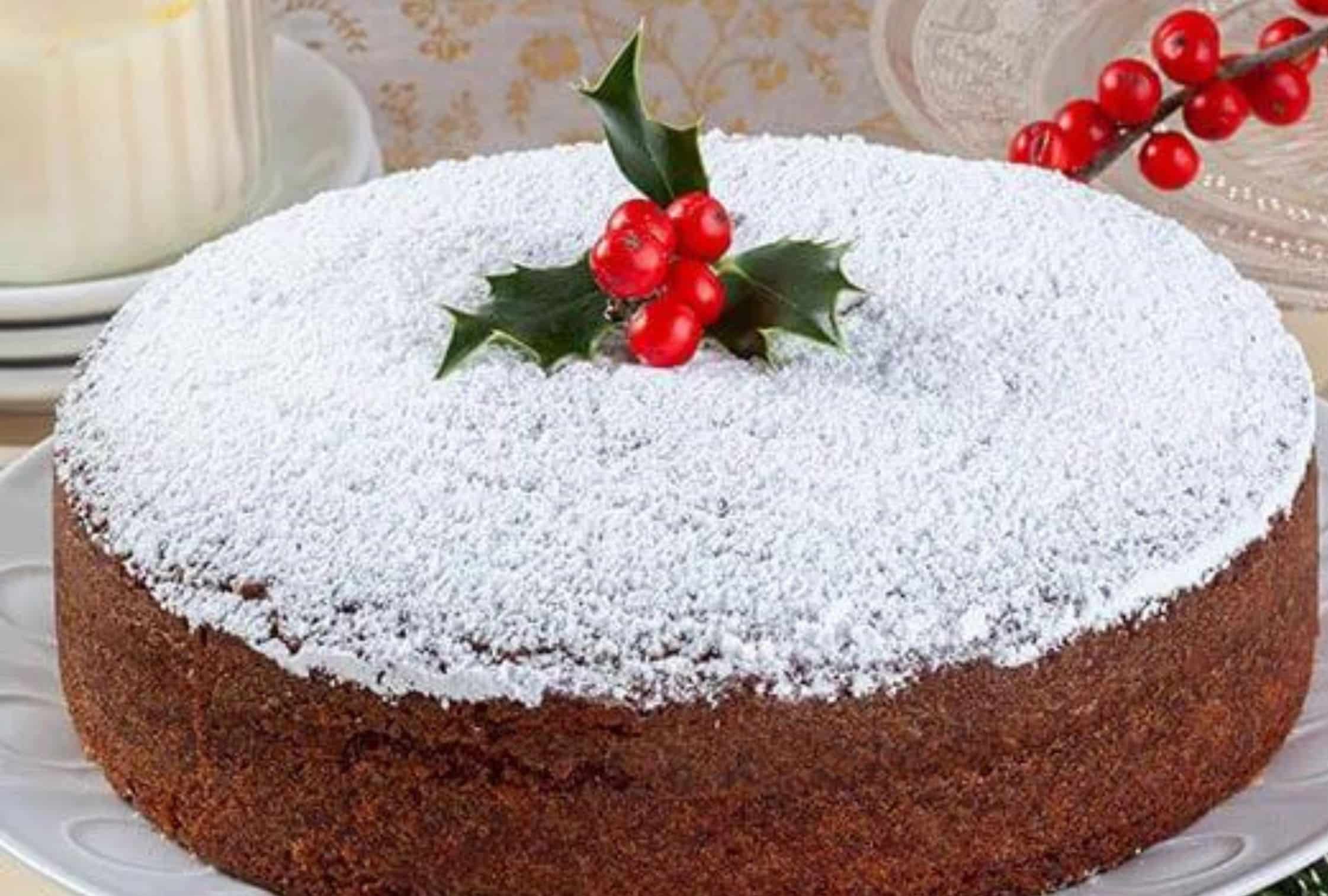


The tradition of Vasilopita in Greece during the New Year’s celebrations is a cherished custom filled with symbolism and anticipation. This special cake, whether in the form of a cake or sweet bread, holds a significant place in the hearts of Greeks during this festive time.
What distinguishes Vasilopita is the surprise it conceals within its layers—a hidden coin, often wrapped in foil or specially crafted for this purpose. This coin symbolizes good fortune, and its discovery within the cake signifies an auspicious start to the new year. Beyond just luck, the recipient of the coin often receives additional blessings or tangible gifts, making the moment of finding it a momentous occasion.
In Greece, the availability and enjoyment of vasilopita extend beyond New Year’s Day, continuing throughout the month that follows. Families, friends, and communities come together to partake in this cherished tradition, eagerly anticipating the slice that might reveal the token of good luck and blessings for the year ahead.
Japan New Year’s Tradition: Food, Family and Bells
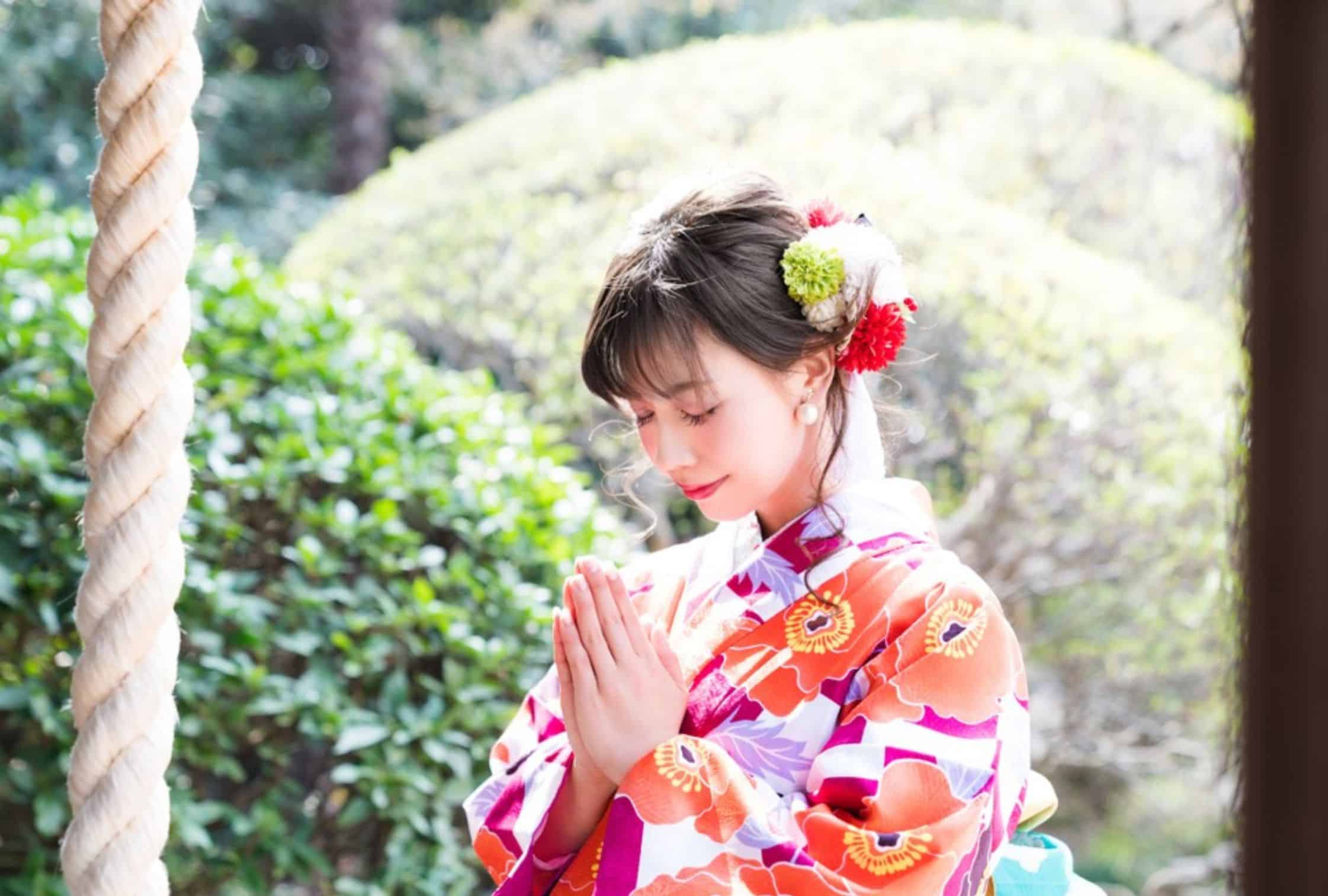


The New Year, or Oshogatsu, holds paramount importance in Japanese culture, steeped in meaningful traditions that foster family unity and a fresh start.
To begin the year on a clean slate, families engage in Osoji, an extensive house-cleaning ritual. This thorough cleaning, signifying the removal of the past year’s clutter and negativity, symbolizes a fresh start and a welcoming atmosphere for the new year. Alongside this, preparations for Osechi Ryori, traditional New Year’s cuisine, are diligently made in the final days of the year.
As the clock strikes midnight on New Year’s Eve, a tranquil yet enduring sound fills the air—the pealing of bells in a ritual known as Joya no Kane. This Buddhist tradition resonates across Japan, as temples countrywide join in this significant ceremony. The rhythmic tolling of the bells, lasting for 1-2 hours, symbolizes the casting away of past troubles and the ushering in of a new beginning.
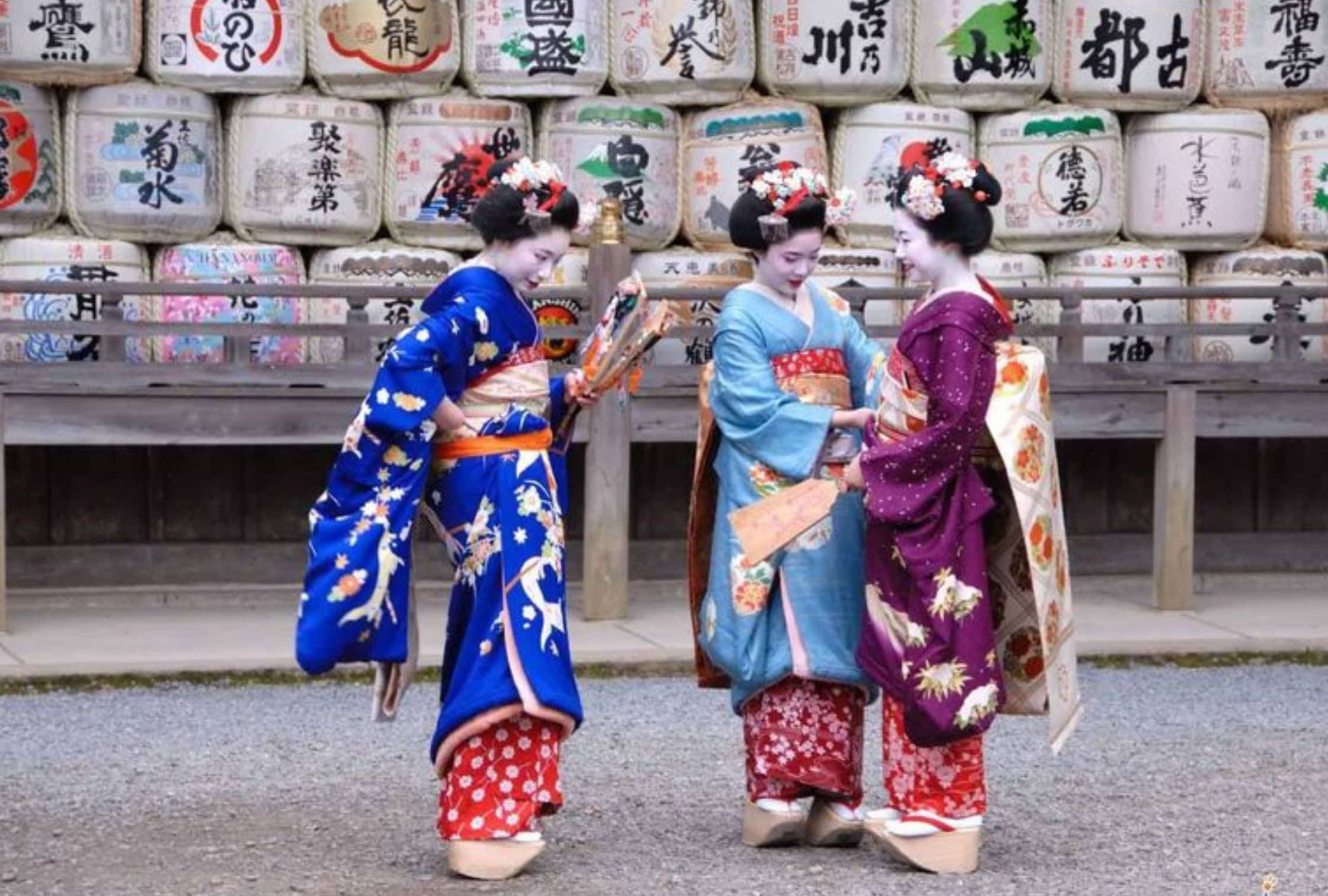


A longstanding New Year’s Eve tradition involves the consumption of soba and Japanese noodles. Originating from the Edo era, soba holds deep symbolism; its long, slender form represents the wish for a lengthy and healthy life. Moreover, soba’s ease of cutting symbolizes the desire to sever ties with the misfortunes of the past year, embracing the new year refreshed and rejuvenated.
In this tapestry of traditions from around the world, may you discover one that resonates deeply with your spirit, guiding you towards what feels most meaningful to you.
Whether it’s a cherished ritual from your own heritage or a newfound custom that touches your soul, may it bring you a sense of connection, joy, and purpose as you embrace the journey ahead. Here’s to a year brimming with beautiful moments, personal growth, and the discovery of traditions that speak to the very essence of your being. Happy New Year!
LET US Help YOu Enjoy New YEar celebrations
REACH OUT TO US AT +603 2303 9100
OR [email protected]
You may also be interested in:
